Like cars, if kept in an ideal environment (cool and dry) a few things will deteriorate but most will not (at least not very fast). In particular, electrolytic capacitors and batteries will tend to be dead (especially the latter). Rubber will tend to deteriorate (DVD door or cassette drive belts) and speaker cones can also deteriorate (my Keil AMT speakers need re-woofering). Electrolytic capacitors tend to dry out.
There's plenty of electronics around from 1965, and things have not changed so much in basic technology.. it's generally salvageable but perhaps not fully functional out of the crypt. Something like a UPS that is mostly battery cost-wise is probably scrap for economic reasons, even if 95%+ of the parts are still fine.
Semiconductors are usually pretty much immune to aging if they're kept cool and not powered.
The biggest reason why parts have a best-before date is corrosion that makes them difficult to solder reliably. That's not a problem if they're assembled into a product, but if you've got reels of diodes, for example, the diodes may be just fine, but so corroded they cannot be used reliably (at least not without some kind of uneconomical rework). Storing them in low-humidity cabinets and using sulfur-free packaging (brown cardboard boxes are often bad) will help.
